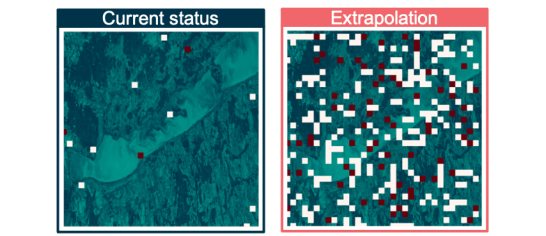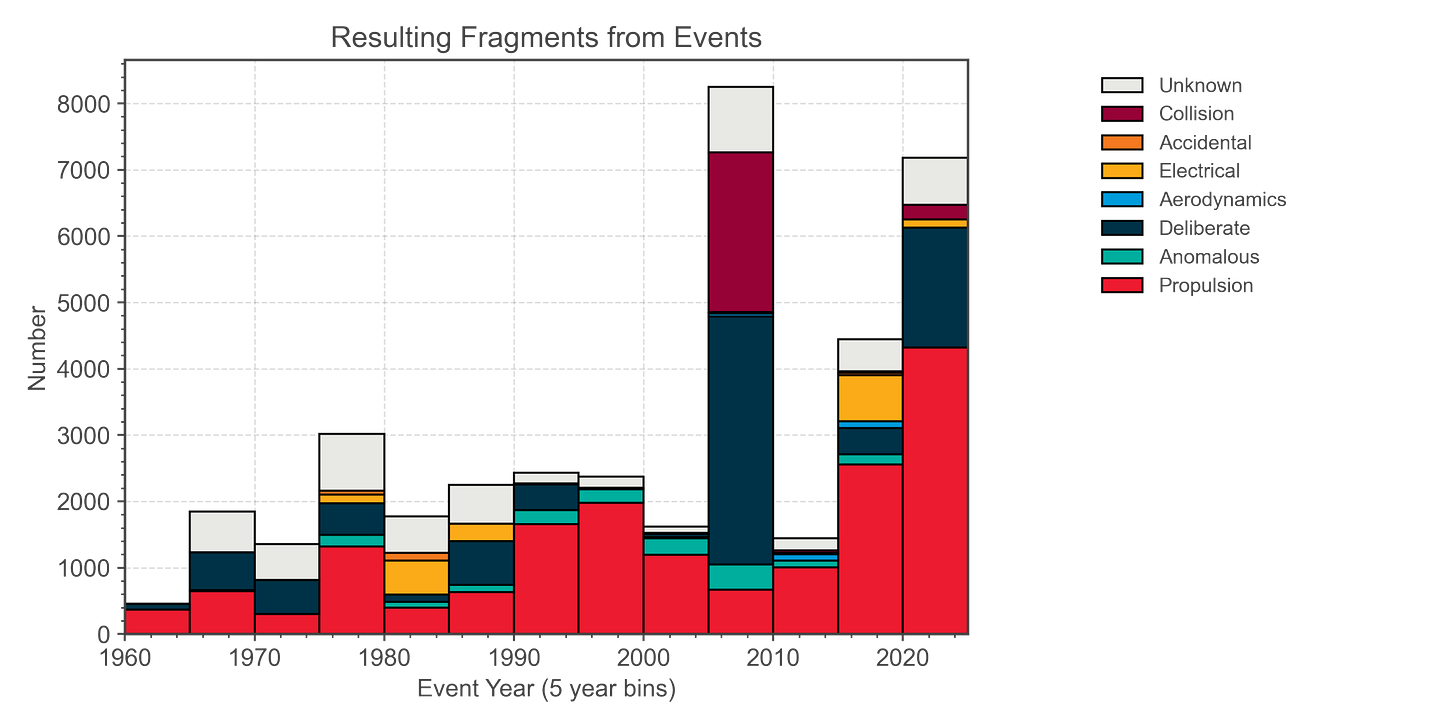Managing the Space Debris Crisis
We are still producing too much debris. Can Europe help?

(Quotes have been lightly edited for clarity)
On April 1st, the 9th European Space Debris Conference was inaugurated in Bonn, Germany. Organized by ESA and supported by the DLR Space Agency, the conference aimed to share updates on the escalating space debris crisis. Speakers at the high-level media briefing included ESA Space Safety Programme Manager Dr. Holger Krag, Prof. Camilla Colombo from Politecnico of Milan, Prof. Carolin Frueh from Purdue University, Dr. Josef Aschbacher , European Space Agency - ESA Director General, Dr. Walther Pelzer, Director General of the German Space Agency at German Aerospace Center (DLR) , and Thomas Reiter , former ESA astronaut and ESA Board member.
The latest findings on space debris are detailed in the 2025 ESA Annual Space Environment Report, available here.
Quick Takeaway
We are still producing too much debris.
Certain low Earth orbits (LEO) are now as populated with debris as they are with active payloads.
The primary obstacles are technical difficulties, economic constraints, a lack of a globally recognized regulatory framework, and the sheer volume of new launches driven by commercial interests.
As history often demonstrates, humanity is more enthusiastic about invention than about responsible stewardship.
The Technological Challenge
ESA’s report highlights that, despite efforts, the amount of space debris is still growing, and is growing fast. De-orbiting rocket bodies and payloads remains both technologically and economically challenging. Satellite resilience to explosions is still underdeveloped, and active debris removal technology is not yet operational. Meanwhile, commercial satellite launches continue to rise. Despite ongoing efforts, we are still generating space debris in 2025.
On average, 10 fragmentation events occur annually, and some of the most congested orbital altitudes (550 km or lower) now contain as much debris as they do active satellites. ESA modeling shows that its satellites must frequently interrupt data acquisition to maneuver around debris. If this trend continues, projections suggest that in 200 years, key ESA satellites such as the Copernicus fleet will struggle to collect scientific data due to continuous collision-avoidance maneuvers. It will be more about dodging debris than conducting science.

A Crowded Orbit
While most space debris in orbit today originated before the rise of commercial spaceflight, the rapid expansion of commercial satellite constellations has intensified the problem. Preferred altitudes for communication satellites, particularly between 500-550 km, are now dangerously congested.
The absence of stringent regulations benefits space-faring nations by keeping barriers to entry low—a convenient but unsustainable status quo.
Starlink, for instance, operates roughly 7,000 satellites at 550 km, with plans to deploy 35,000 more in the coming decade. According to Dr. Krag, lower orbits offer a natural cleaning mechanism, as atmospheric drag will remove these objects if they are not actively deorbited. However, the sheer number of satellites still poses a collision risk.
Dr. Pelzer warns that focusing on individual constellations like Starlink misses the bigger picture: “Regulation must apply to all players. If we create rules for only one constellation, we will end up with an ineffective system. A globally accepted regulatory framework is the only sustainable solution.”
The Missing Regulations
The debris issue resembles a chicken-and-egg dilemma: we need regulations to solve the problem, but the lack of immediate solutions makes regulation difficult. The problem is relatively new, and economic challenges complicate matters further. For instance, designing a space system to reliably dispose at 100% likelihood would be unaffordable today. Currently, we reach a level of 70 to 80% reliability. So there's an only an 80% chance that the systems actually can dispose themselves from space.; pushing for 90% reliability becomes prohibitively expensive.
Sixty percent of debris in orbit today results from past explosions
Prof. Früh emphasizes that regulation requires precise data: “To create effective rules, we must first know exactly where everything is in orbit. Right now, we are still working on gathering and exchanging that information.”
The political challenges are equally significant. As Rolf Densing, Head of the ESA Space Operations Centre in Darmstadt, explains: “If you want a global space traffic regulation, the logical route is through the UN. But that means negotiating with over 100 nations, each with its own space ambitions to obtain space flight. The result is often the lowest common denominator, which isn’t enough to solve the problem.”
In short, the absence of stringent regulations benefits space-faring nations by keeping barriers to entry low—a convenient but unsustainable status quo.
Fragmentation vs. Collisions
One of the report’s key revelations concerns the difference between fragmentation and collision events. While deliberate collisions are highly destructive, unintentional fragmentations—caused by factors such as residual propellant leaks or battery failures—pose an even greater problem.
Dr. Krag notes that while collisions occur roughly once every five years, space sees 10 fragmentations due to explosions annually. “Sixty percent of debris in orbit today results from past explosions,” he explains.

The solution lies in better satellite passivation techniques—ensuring spacecraft have no leftover fuel or battery charge that could trigger explosions. However, as Prof. Früh points out, unexplained fragmentation events remain a concern: “Despite our best efforts, we have seen upper-stage rockets that were supposedly passivated still break apart. We still have technology gaps to address.”
A Strategic Approach
At its core, the debris crisis is a technological challenge compounded by a short-sighted mindset. Humanity has always been more eager to explore than to clean up after itself. The space sector, unsurprisingly, is more like Ulysses, enthralled by discovery, than Penelope, dedicated to keeping our home - our orbital environment- safe and sustainable.
ESA appears to be attempting a Penelope maneuver. Recognizing that it cannot solve the problem alone, ESA is working to establish technological solutions that could set a precedent for the global community. The Zero Debris Charter, though not legally binding, represents a step in this direction. Notably, ESA has committed its own satellites to a five-year post-mission deorbiting timeline, setting a potential industry standard.
ESA’s strategy is not one of expansion, but of preservation. Leading by example, the agency wants to demonstrate that responsible spaceflight is possible. The questions are whether it will work, and whether others will follow suit.


